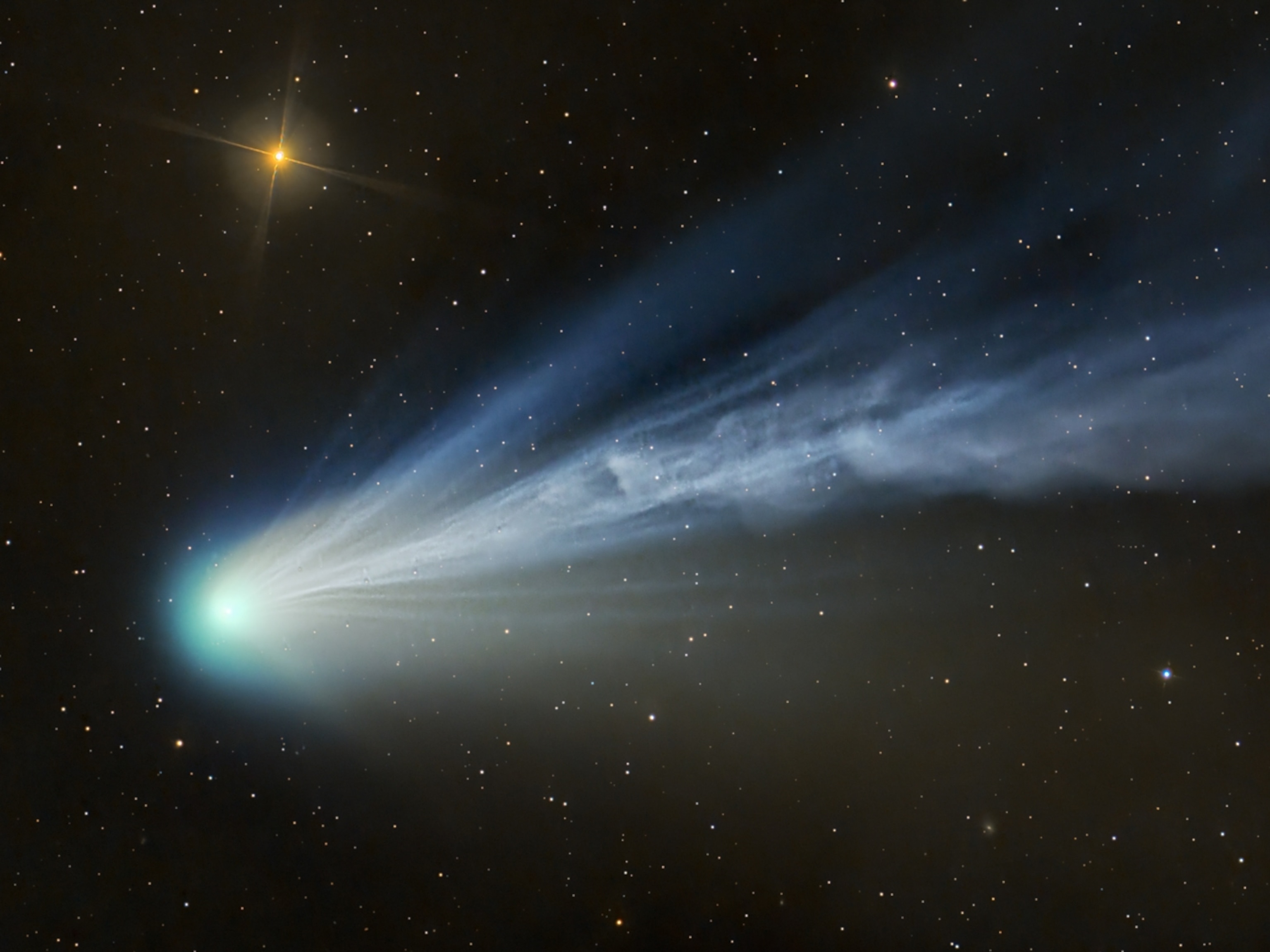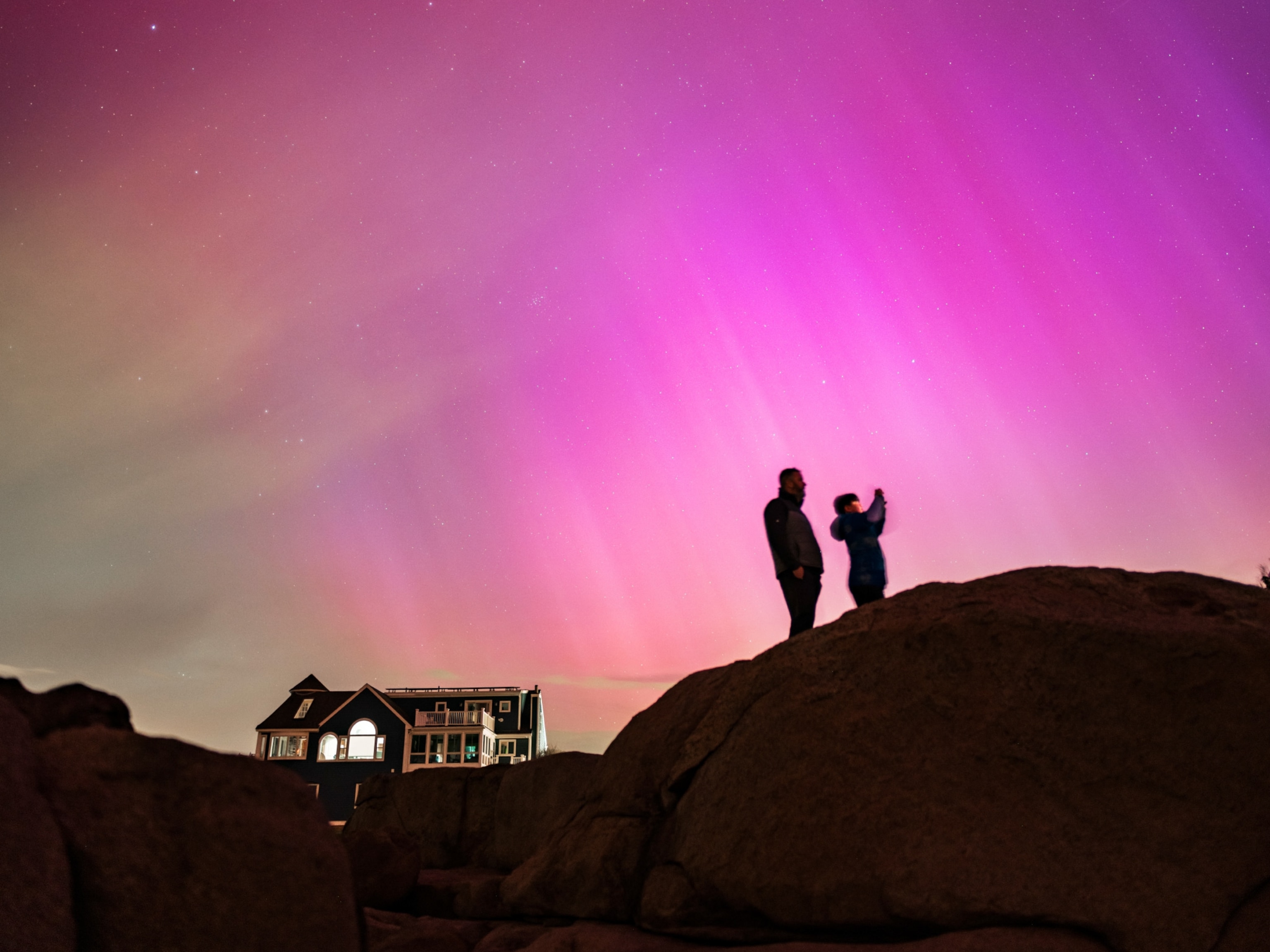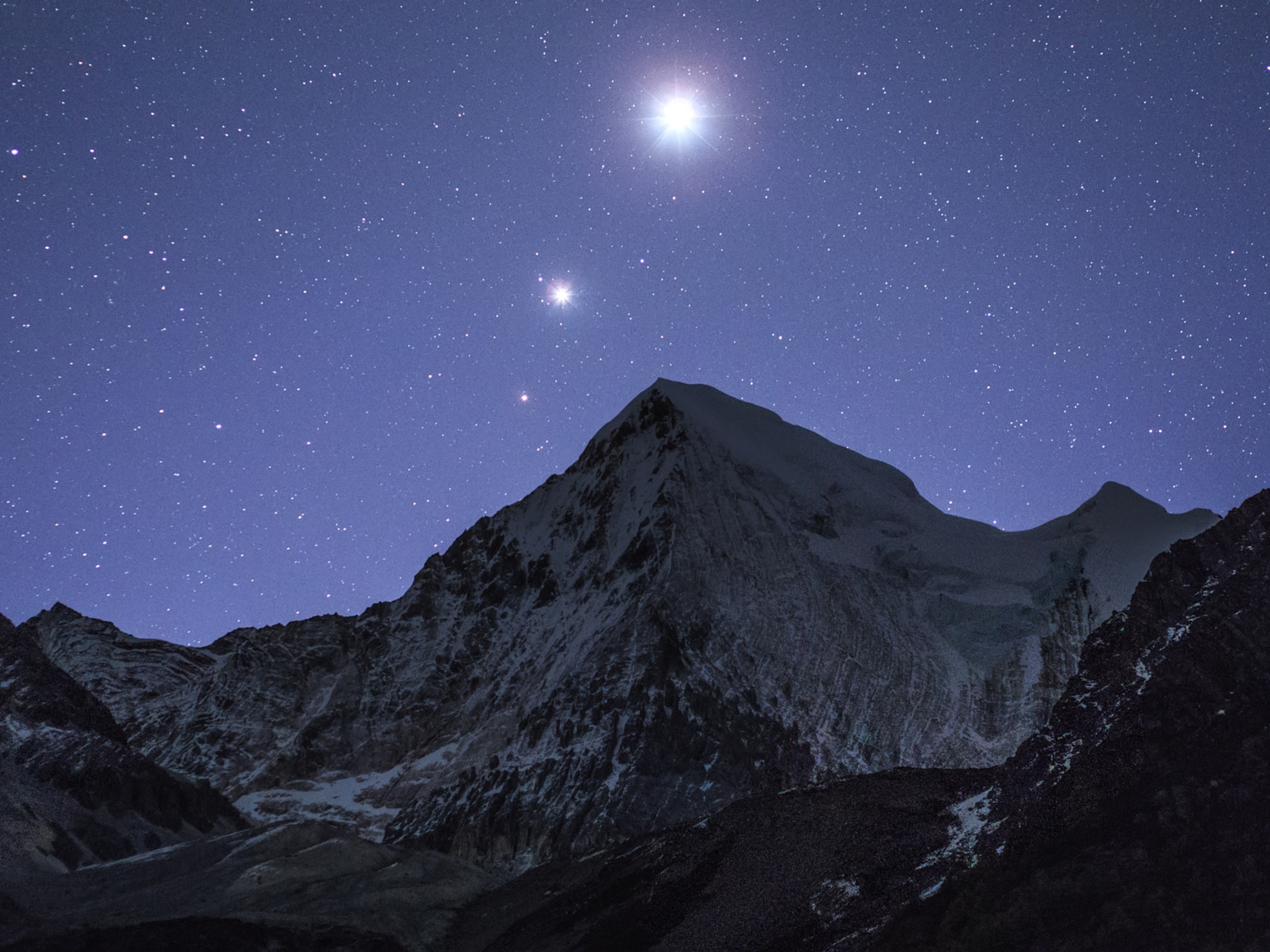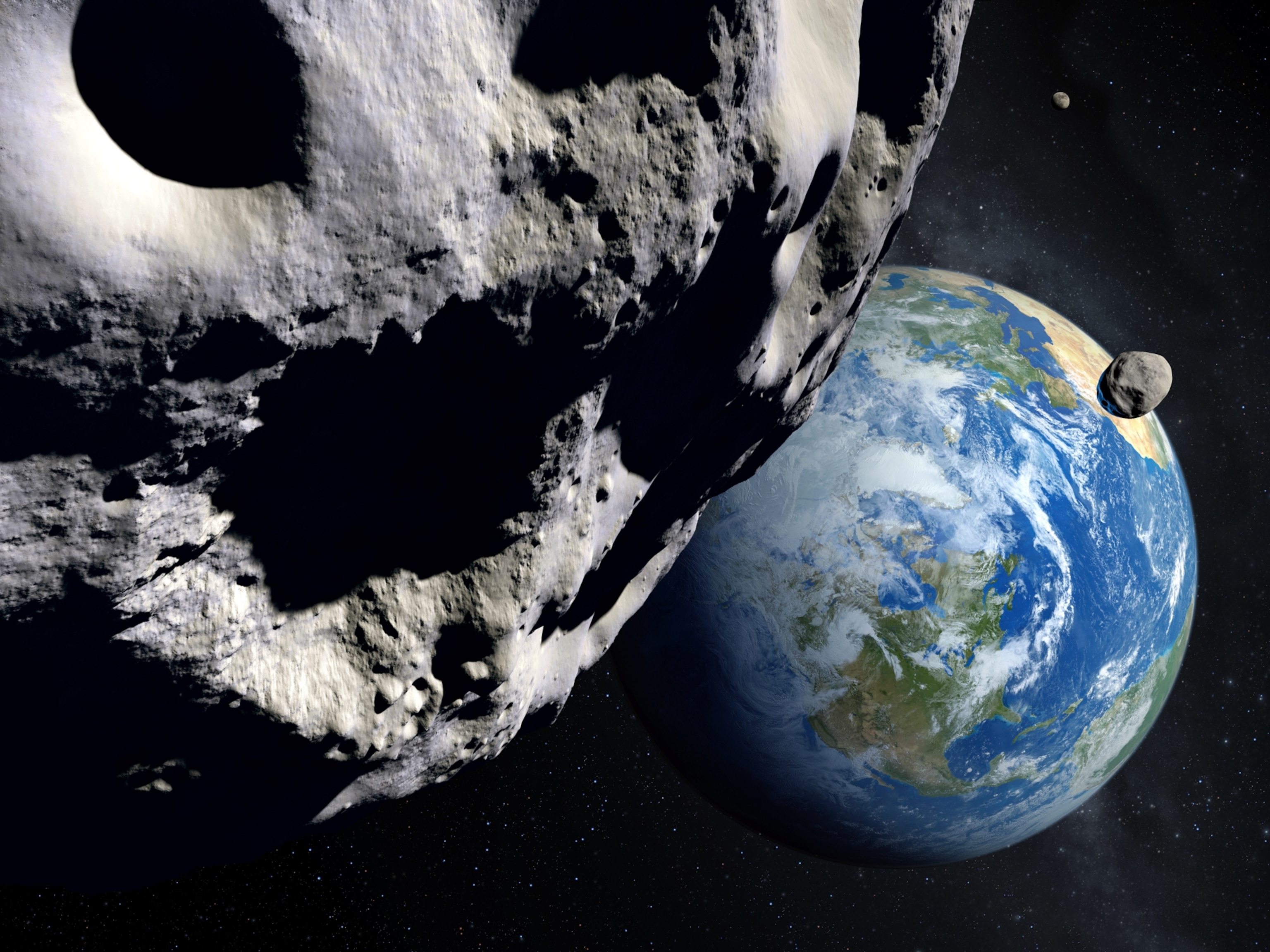7 night sky events to see in April, from a meteor shower to the ‘pink moon’
The moon dims, the meteors fly, and the planets dance—these are the most exciting celestial events happening this month.

In April, the night sky is packed with cosmic events: star clusters, planetary alignments, a meteor shower, and even a rare micromoon. Whether you’re a seasoned stargazer or just looking for a moment of awe, here’s what to watch for.
Moon near the Pleiades star cluster—April 1
On April 1, look for the crescent moon passing just beside the Pleiades, one of the brightest and most recognizable star clusters visible to the naked eye. Located about 410 light-years away in the constellation Taurus, the Pleiades—also known as the “Seven Sisters”—appear as a compact group of stars.
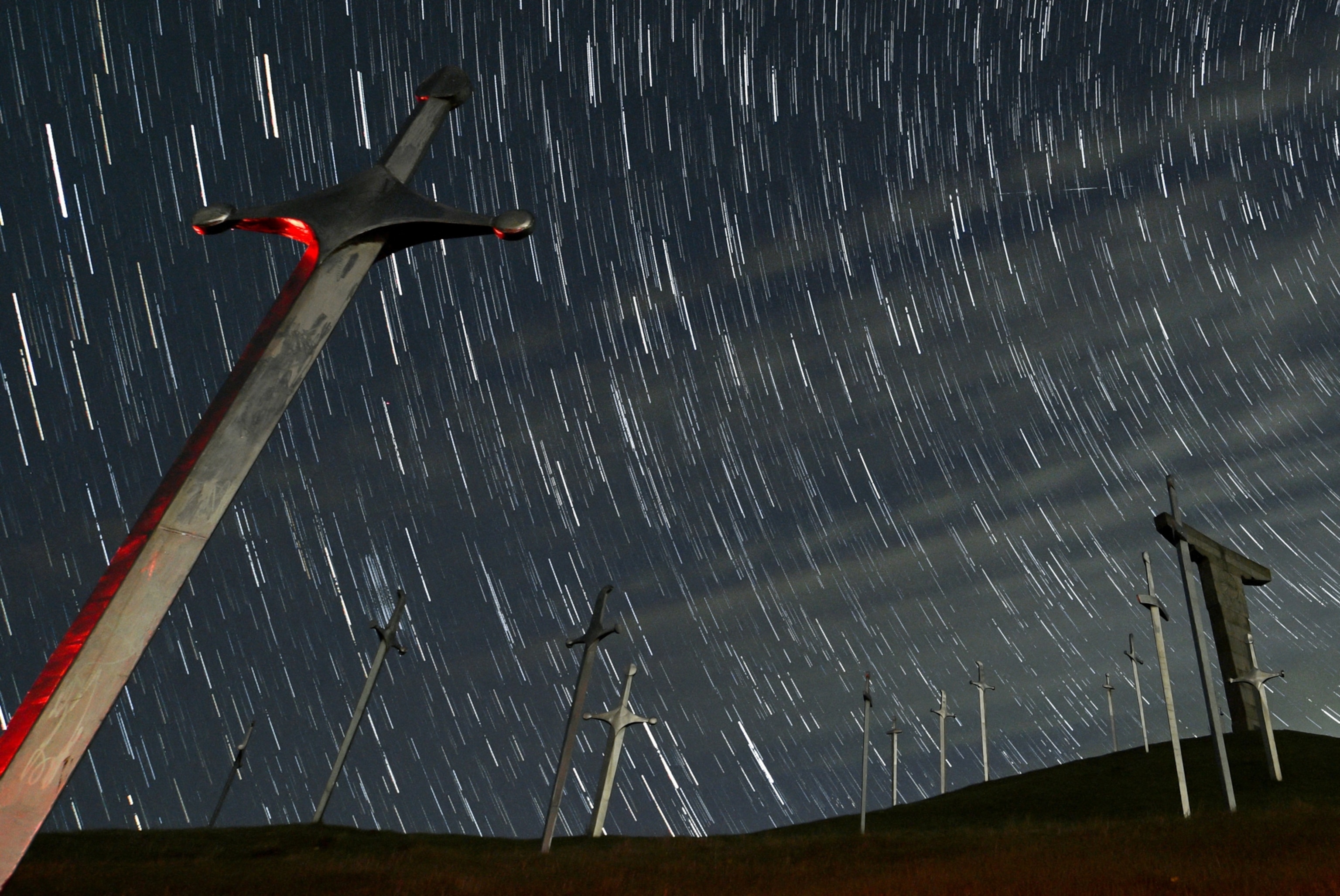
The cluster actually contains more than 1,000 stars, but only about six are bright enough to see without binoculars or a telescope. These young stars, estimated to be less than 100 million years old, are extremely hot and burn a bright blue that’s easy to see from Earth.
The full “Pink Moon”—April 13
April’s full moon is known as the “pink moon,”—not because of its color, but because of timing. The name, popularized by the Farmers’ Almanac and rooted in Indigenous North American traditions, refers to the seasonal bloom of moss pink, or creeping phlox, one of the earliest wildflowers to appear in spring.
(Learn about the lunar cycle and the origins of each month’s full moon name.)
The April full moon also happens to be a micromoon. The opposite of a supermoon, a micromoon occurs when our celestial companion reaches the farthest point from Earth on its elliptical orbit, known as apogee. On April 13, it will sit about 252,000 miles away and appear slightly smaller and dimmer than usual.
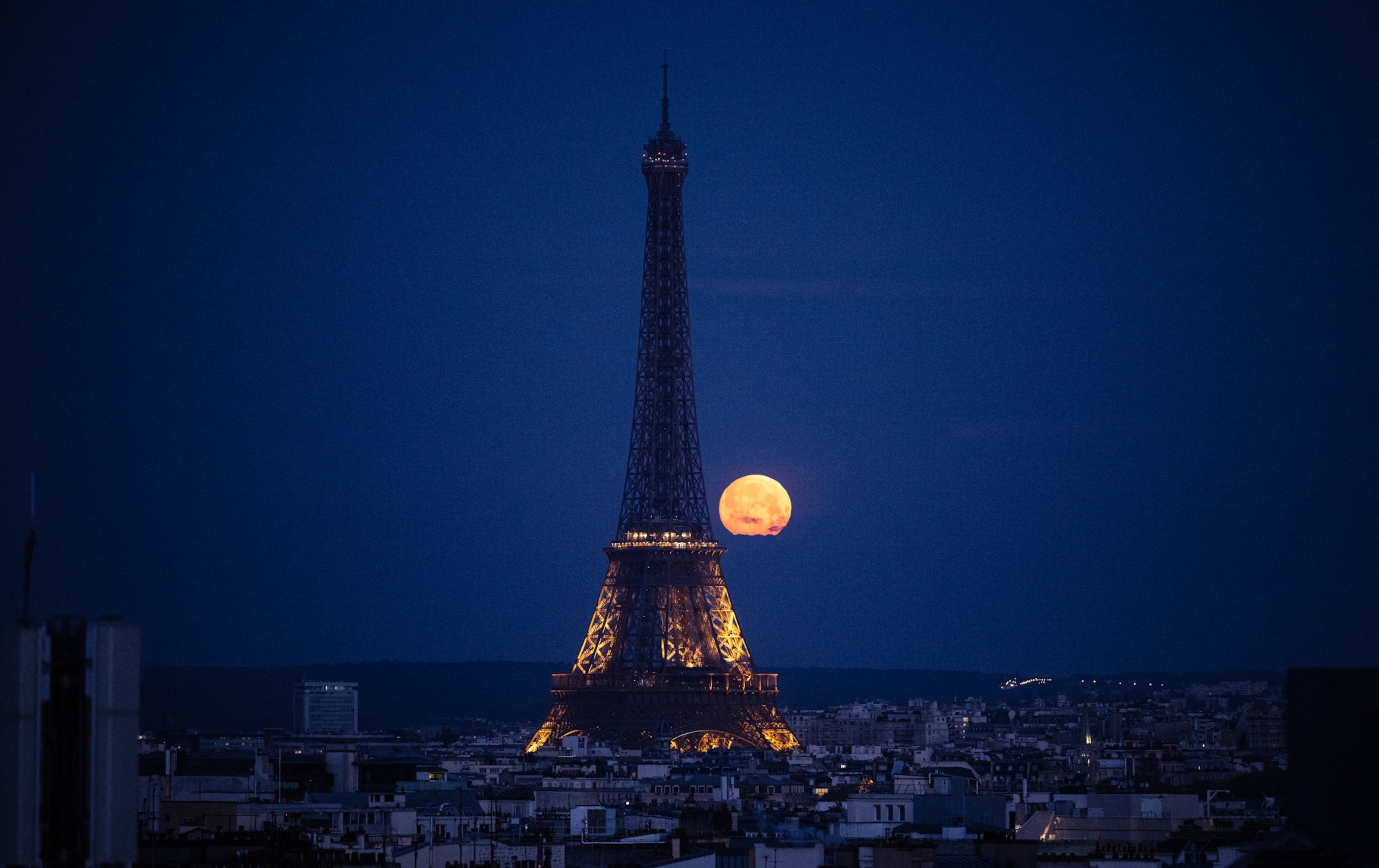

A four planet alignment—April 17
Early risers in the Southern Hemisphere will get a treat on April 17: Mercury, Venus, Saturn, and Neptune will line up low in the eastern sky just before sunrise. The first three will be visible to the naked eye, while dim Neptune is best viewed through binoculars or a telescope.
The planets will also appear in the Northern Hemisphere, but the sky will be a bit too bright for optimal viewing. Venus, however, will still shine brightly, as it’s the brightest object in the sky after the sun and the moon.
Mercury at greatest western elongation—April 21
If you’re interested in peering at Mercury, you’ll have a good chance around sunrise on April 21. The planet will reach its greatest western elongation, one of the two points in its orbit where it is farthest from the sun.
Since Mercury orbits so close to the sun, it’s often drowned out by sunlight—and that’s why the planet is best viewed during its greatest elongation. Be careful not to look into the sun when observing Mercury, especially through binoculars or a telescope.
Lyrid meteor shower—April 21–22
The Lyrid meteor shower is expected to peak between April 21 and 22, allowing one to spot up to 18 meteors per hour under ideal conditions. The shower runs from April 17 to 26, but this two-night window is the best time to catch the show. The moon might drown out some dimmer meteors, as it’ll be 40 percent full.
(Here’s ow to see the Lyrid meteor shower at its peak.)
The Lyrids are named for the constellation Lyra, from which the meteors appear to emanate, but their parent object is the comet C/1861 G1 Thatcher. It’s one of the oldest meteor showers, with recorded sightings dating back more than 2,700 years.
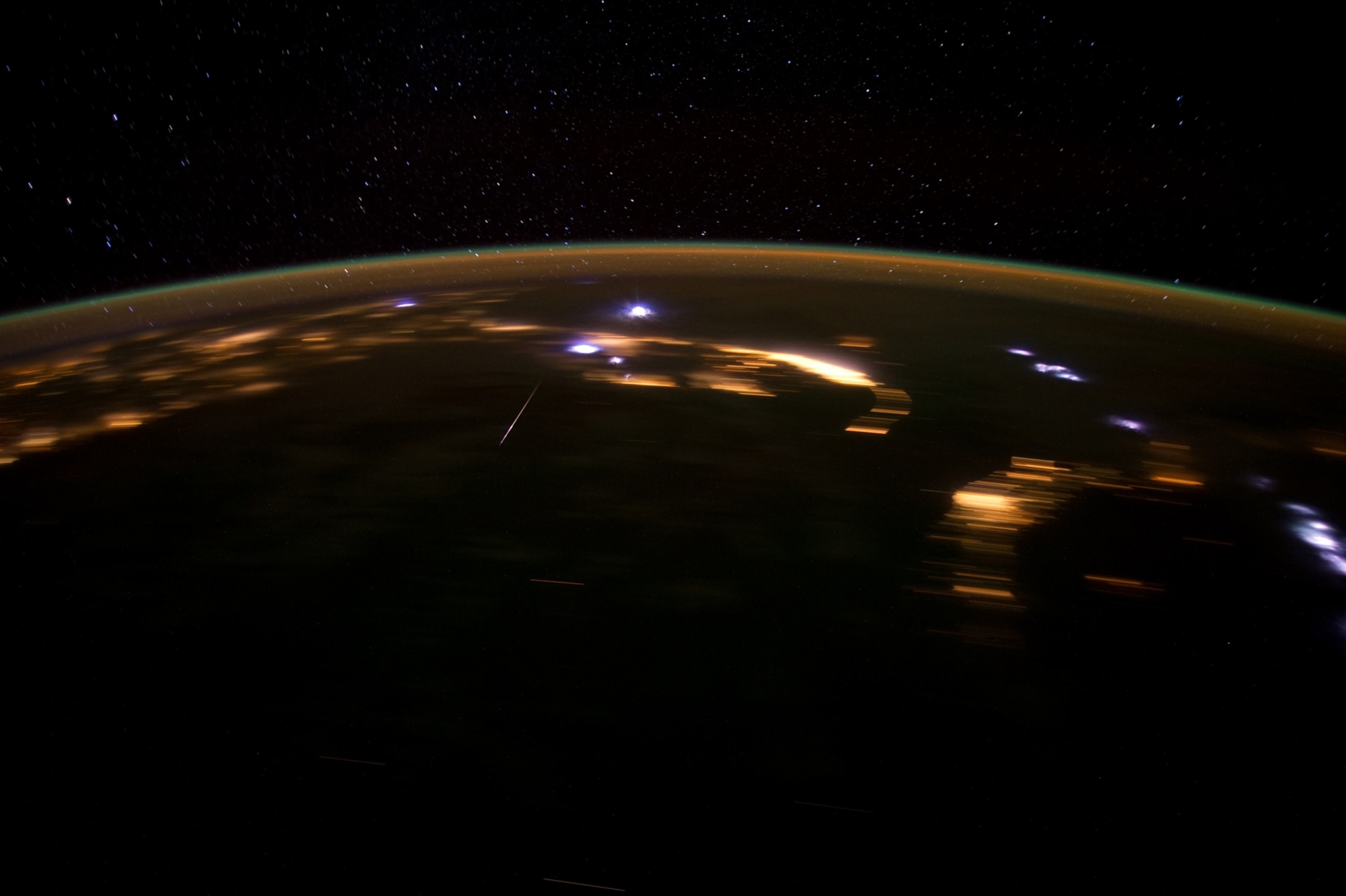
Galactic smiley face—April 25
On April 25, you’ll have a chance to see a cosmic smiley face in the early morning sky. Venus and Saturn will be located near each other, as well as near the waning crescent moon. If you tilt your head and stretch your imagination, it’s possible to visualize a smiley face.
You can also look for a phenomenon called “earthshine” on the moon. The unlit part of a crescent moon can sometimes feature a faint glow when viewed just before sunrise or after sunset—this is light reflected from Earth.
Prime stargazing conditions—April 27
The new moon on April 27 means dark skies—perfect for spotting fainter celestial objects usually washed out by moonlight. If you have a powerful enough telescope, download a stargazing app to help you discover what’s visible, from planets to nebulas to galaxies.
(Here’s why Montana is 2025's ultimate stargazing destination.)
And though the moon won’t be visible this night, it’ll be a supermoon—it’ll reach the point closest to Earth in its orbit, also called perigee.

